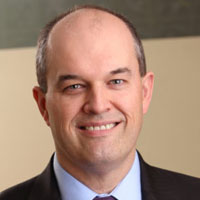
Clients who’ve established a lifestyle budget for retirement may eventually conclude they’ve run out of “stuff” and “experiences” to purchase. At this point, they may decide to shift or expand their focus toward charity and family giving. The ability to pay it forward and create a legacy plan is one of the rewards of saving and investing during a career. But how can one achieve that when the cost of senior housing or long-term care may loom in the near future?
It requires careful, advance planning.
Prefunding charitable goals
Many senior housing communities, and particularly CCRCs (continuing care retirement communities) will put prospective residents though physical and financial underwriting prior to admittance. This is important because it assures the community that the retiree has the financial means to pay an entry fee and ongoing monthly fees without depleting assets, which would put the community (and thus, other residents) at financial risk.
One of my clients decided to first determine how much money her aging mother would need to show in order to qualify for entrance. The community conducted its assessment based on the mother’s age and health. It indicated that after the entry fee was paid, mom would need about $700,000 in liquid assets to qualify for entrance. Knowing that, my client and her mom then opened up a donor-advised fund and funded it with a lump sum to achieve the mom’s charitable goals over the next 10 years.
After setting up the donor-advised fund, the mom still had more than $700,000 left in her investment portfolio. This enabled her to meet the CCRC’s asset requirements while ensuring that her charitable assets were a completed gift outside of her reach and not available for future care expenses. The mom’s donor-advised fund deposit also provided a sizeable tax deduction that helped her offset other income taxes that year.
Establishing a pattern of giving
Senior communities and residents rely on a partnership of sorts to support one another financially. It is nobody’s goal to see a resident deplete financial assets before the end of their life. Communities also need to mind their own financial health to continue to serve current and future residents.
That said, communities often look for patterns of income and expenses when reviewing the financial means of prospective residents. Those who disclose their gifting plans give communities a better sense of transparency as to how those expenses may continue into the future. However, if a resident in a private-pay community like a CCRC starts to accelerate charitable or family gifting that was not previously disclosed, and that acceleration of expenses leads to depletion of assets, the resident may be in breach of the residency agreement. This may lead to dismissal from the community.
Many communities speak of a “care for life” concept, which protects residents who run out of money by no fault of their own. Benevolent funds and endowments established by these communities help support aging retirees who face this challenge. The important language in that condition, however, is “by no fault of their own.” If a prospective resident never disclosed their intent to continue charitable or family giving and runs out of money, that may be enough of a cause to enable the community to kick the resident out.
Care costs a concern? Consider a bequest
Costs of care tend to be one of the most unpredictable expenses in retirement. Seniors could require extended care in a skilled nursing or memory care facility that costs hundreds of thousands of dollars. Genworth’s Cost of Care Survey calculates the average cost of a private room in a skilled nursing facility in my home state of New Jersey to be nearly $13,000 per month in 2023.
Or if seniors are more fortunate, they could die peacefully in their sleep, effectively paying nothing in care costs in their later years.
Retirees can help protect themselves from these potential costs with long-term care insurance, or perhaps a lifecare contract through a CCRC. That said, individuals may still incur significant out-of-pocket costs at some point even if they have insurance in place to mitigate these risks.
If this is keeping your clients up at night, it might make sense for them to think about what they might have left over versus what they have today. And even if it’s not keeping them awake, it’s a good idea to mention to clients how the cost of care can impact any charitable-giving plans they may have for the future.
By working with you (their trusted wealth advisor) and their estate-planning attorney, a retiree can identify individuals and charitable organizations and name them as beneficiaries though their will via bequests.
To try to maximize the tax impact, clients can also consider naming a non-profit charitable organization as a beneficiary for tax-deferred retirement accounts. The non-profit, unlike a named individual, would not have to pay income tax on those IRA or 401(k) assets.
Additionally, many CCRCs have refundable contracts, which typically pay out between 50% and 90% of the initial entry fee to a named beneficiary. While family members are often named as the beneficiaries, the refunds can also be directed to charities granted beneficiary status. This may also reduce any potential estate or inheritance tax exposure.
Conclusion
Charitable giving does not need to end prior to entering retirement. On the contrary, many retirees are motivated to give more in retirement when they realize they have the financial capacity to do so.
I talk to clients all the time about tax-efficient gifting strategies, such as gifting appreciated securities, establishing donor-advised funds and using qualified charitable distributions (QCDs) from retirement accounts. Thought and consideration must be paid to any gifting plan — including how housing and care costs may come into play.
No retiree wants to be generous to a fault and put their own financial security at risk. With proper planning, you can help your clients maintain their financial security while still helping them support the people, causes and charitable institutions and organizations that are important to them.
Jim Ciprich, CFP, MBA, is a wealth advisor with CI RegentAtlantic Private Wealth in Morristown, N.J. He serves a broad range of clients and focuses on retirees considering care and housing options. Jim founded and co-chairs his firm’s Senior Solutions specialty practice. He also serves on an advisor counsel to the MIT AgeLab and has served as an adjunct professor at Fairleigh Dickinson University in its CFP® program. Jim is the past president of his local estate planning council. In a prior career, he was an award-winning marketing executive in the music industry.







